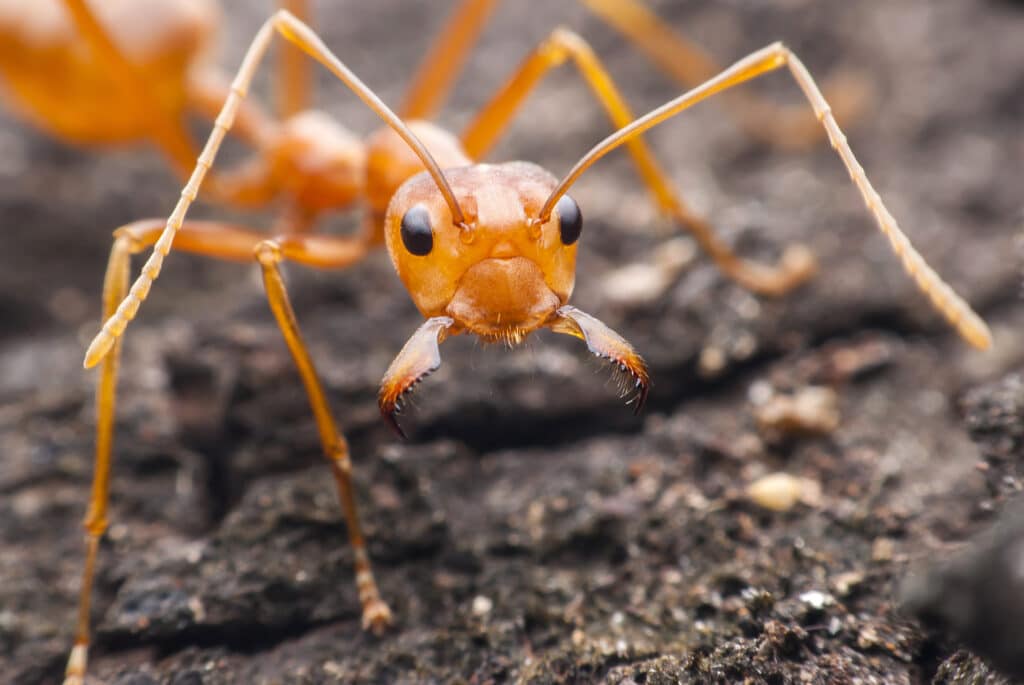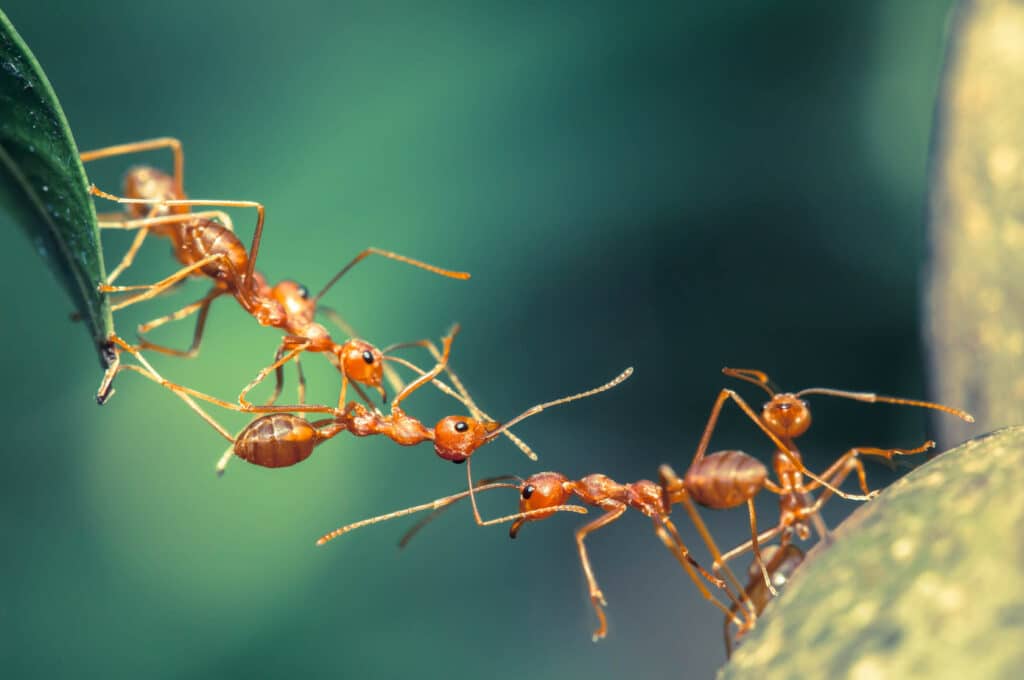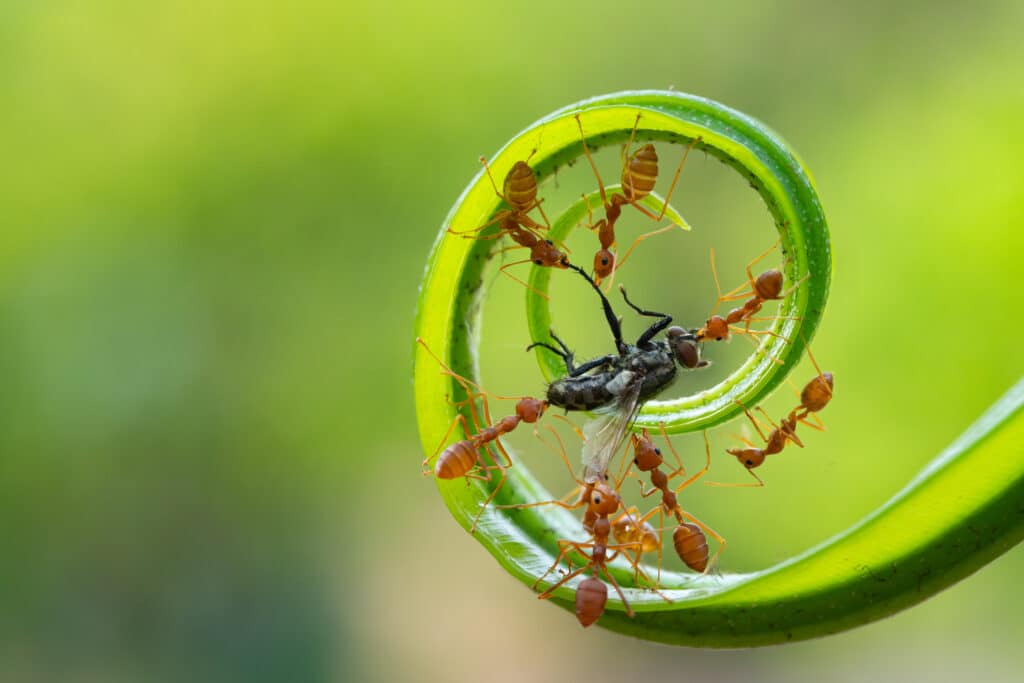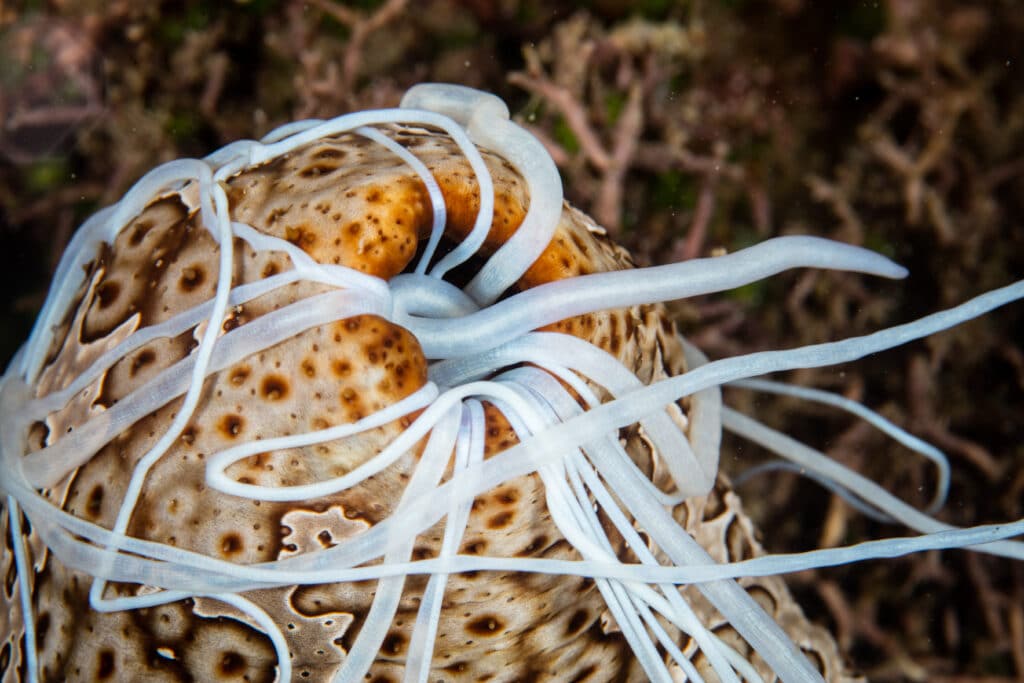
7 Shocking Facts About the Google Memory Game You Never Knew
We all have our favorite memory games, but did you know that Google has entered the ring with an impressive array of neurologic challenges for

Answering “do ants have brains?” Yes, ants do possess some kind of brain, though it is not as advanced or complex as that found in higher animals such as humans and mammals. Ants’ brains are sometimes referred to as supraesophageal ganglion or microbrains.
The ant brain, located in its head, consists of three primary parts: protocerebrum, deutocerebrum and tritocerebrum. The protocerebrum (or “primary brain”) processes sensory information while controlling behavior while deutocerebrum (or “secondary brain”) regulates motor activities like walking and muscle movement while tritocerebrum (or “third brain”) regulates basic functions like respiration and digestion.
Ant brains may appear simple compared to humans or other higher animals, but they are still capable of performing complex functions. For instance, ants have the capacity to recognize different smells and remember where they have previously searched for food. Furthermore, they use pheromones for communication among themselves, sometimes creating “ant trails” which help them locate home again.
Overall, ants do indeed possess a brain. This brain allows them to process sensory information, regulate their behavior, remember things, communicate with each other, and perform many more complex functions. Therefore, yes – ants truly do possess brains!
There are a number of fascinating aspects of insect nervous systems worth investigating. For instance, certain species of ants possess what’s known as the “mushroom body”, an organ in their brain responsible for learning and memory. Furthermore, many insects also feature specialized organs like optical lobes which detect light and help them navigate in their environments.
In conclusion, insect brains may be much simpler than those of higher animals like humans and mammals, but they still possess brains. Although theirs may be small and simple compared to ours, ants still possess the capacity for processing sensory information, memory retention, communication between individuals, trail-forming behavior, and more complex activities – proof positive that ants possess some form of brain!

An exhaustive discussion of whether ants possess lungs is a complex topic, as there are multiple aspects to take into account. While many people mistakenly assume that ants lack lungs, science has revealed this misconception to be false: in reality, ants do possess primitive lung structures which allow them to breathe oxygen and expel carbon dioxide.
Ants consist of two body regions–the head and abdomen. The thorax lies between these two regions, housing not only wings and legs but also various organs like muscles and digestive system. Connected to this network are tracheae–small tubes similar to vertebrate lungs that supply oxygen through diffusion to insect cells during respiration.
Ants obtain nutrients through their mouths, where they ingest food particles with their tongue. After that, they use their tracheal tubes to absorb some oxygen from the air around them and direct it towards tiny openings or spiracles along their body for nourishment.
These openings allow air from outside sources like soil or vegetation to enter into an ant’s respiratory system and mix with oxygen from food particles inside their gut, before traveling back out through a similar route when leaving their exoskeleton. As a result, ants can breathe both from internal sources such as food particles and external ones they come into contact with while searching for food or nesting materials.
Ants’ tracheal systems work differently than vertebrates’ due to their size difference; however, they still supply oxygen throughout their bodies. Ants lack certain structures found in vertebrate lungs such as alveoli which provide additional surface area for gas exchange during pulmonary respiration; however, some species have evolved sufficiently so that oxygen absorption occurs at an effective rate even without these specialized organelles present within their respiratory system.
Contrary to popular belief, ants actually possess lungs! While their organs may not look exactly like our own, they work very similarly by taking in essential molecules for respiration from air entering their body through tiny openings along their exoskeleton and exhaling them again as carbon dioxide waste products!

Ants rely on pheromones to communicate with one another and navigate their environment. Pheromones are chemical signals released by special glands within an ant’s body that other ants can follow when food is found. Pheromones interact with ants’ nervous systems through both direct contact and indirect means through antennae.
An ant’s antennae will send an impulse directly to its brain, serving as the control center for decisions and behavior. This enables them to recognize a scent even if they have never encountered it before. This direct connection helps ants quickly respond to situations and navigate complex environments.
Pheromones also influence our nervous system indirectly through indirect contact, such as when an ant encounters the scent of another in its environment. When released by one ant, its chemicals bind to receptors on cells located in adjacent antennae and cause them to modify their behavior accordingly. For instance, when one ant discovers food, it may release a certain hormone which in turn prompts other nearby ants to become more active while searching for food sources themselves.
Pheromone communication is highly efficient because it can spread rapidly over long distances and alert many workers simultaneously about a potential food source or danger. Furthermore, these signals vary depending on how much or which type of pheromone is present – lower concentrations may lead to exploratory behaviours while higher ones may trigger aggressive behaviors such as attacking intruders or competing for resources with other colonies.
Pheromones provide an important link between ants and their nervous systems, connecting them in both direct and indirect ways. This enables them to coordinate activities across vast territories without physical contact with each other and quickly adjust according to changes in their environment. Pheromones enable colonies of ants to work together efficiently as one unit and accomplish complex tasks such as building networks of tunnels or guarding vast territories against intruders with little more than chemical messages released into the air around them.
Anencephalic animals refer to any animals without brains, including jellyfish, worms, sea stars, mollusks and sponges. These ancient creatures were among the earliest creatures to evolve on Earth and remain important components of marine ecosystems and play an integral role in food chains.
Jellyfish have no internal bones or organs and rely solely on their radial symmetry for movement. Their outer layer, consisting of two layers called epidermis and gastrodermis, helps them sense their environment and obtain food from it. Jellyfish typically feed on plankton, small crustaceans, larvae, other jellyfish, and fish eggs. Despite lacking a brain, many species possess sophisticated nerve networks located at their oral arms which regulate swimming movements while keeping track of light directions for navigation purposes.
Worms are an array of invertebrates without brains, though some species may possess basic reflexes such as those found in nematodes. Like jellyfish, worms move through space by contracting their muscular surface to propel themselves forward. Most species feed on organic matter like bacteria or decaying plants while some even prey upon smaller organisms like protozoans or insect larvae.

Echinoderms, such as sea stars, do not possess brains. Instead they rely on a complex nervous system composed of clusters of microscopic cells called paxillae distributed throughout their bodies to sense light direction or changes in pressure levels and coordinate locomotion with tube feet around disc-shaped body structure to catch prey.
Mollusks such as snails and squids fall within this group, however their coordination is more intricate due to a primitive nervous system consisting of two pairs of ganglia connected by nerves running along their length which helps with intricate movements while providing warning signals when predators or danger sources appear. When it comes to feeding habits however, these animals typically scavenge either dead organisms or filter out particles from water currents depending on which species is present in any given environment.
Finally, sponges are among the simplest organisms in this group as they only possess cells for absorption tasks and lack any kind of neural tissue. Therefore, they rely solely on chemical signals from external sources to decide what is safe or dangerous in their environment before acting accordingly.
Sponge populations generally stay put in their preferred habitats, yet some still manage to capture prey items like single-celled organisms using collars made out of flagella attached around their mouths, showing there is much complexity left unexamined about these seemingly “mindless” creatures despite having no brains whatsoever.
But do ants possess brains? Yes, we already answered that question.

We all have our favorite memory games, but did you know that Google has entered the ring with an impressive array of neurologic challenges for

Einstein’s Universal Appeal: Exploring the Global Impact of an Iconic Genius in 2023 Why Does the World Remember Einstein as a World Citizen? What is

I genuinely dislike computer science, but that won’t stop me from earning my degree by 2023. It’s no secret that computer science classes can be

In the early days of Instagram, getting verified was considered a sign of honor. That little blue checkmark next to your name indicated you were
† These statements have not been evaluated by the FDA. This product is not intended to diagnose, treat, cure, or prevent any disease.